Celebrating The Fall of Ideals, Mike Martin upgrades with two smoking PRS Custom 24s, while Jason Richardson unveils two dazzling Music Man Cutlass signatures.
A lot of bands are lucky enough to carve a career with one big hit. If they’re even luckier, they’ll ride the wave of an impactful album for decades. But for melodic metalcore heavyweights All That Remains, who are honoring their game-changing The Fall of Ideals with a full album play, it’s not even their most-popular record. Following on the energy and success of that influential 2006 album, they released five straight albums that landed in the top 10 of Billboard’s U.S. Rock chart.
The coal fueling All That Remains’ locomotive is their propulsive guitar work. The original firepower was supplied by cofounding shredmeister Oli Herbert who was originally flanked by Chris Bartlett. Current rhythm rifleman Mike Martin replaced Bartlett in 2004 and provided the classically trained Herbert a solid substratum to dance all over. That duo defined ATR’s harmonious heaviness, Gothenburg groove, and aggressive attitude for almost 15 years before Herbert’s untimely passing in October 2018 just weeks before releasing their ninth trouncing album, Victim of the New Disease. Since then, the band has continued with blazing flamethrower Jason Richardson (Born of Osiris and Chelsea Grin).
Before All That Remains’ May 10th headlining show at Nashville’s Basement East, PG’s Perry Bean had to pick his jaw off the floor and re-screw his skullcap on after seeing the amazing instruments both guitarists Mike Martin and Jason Richardson brought on tour. Martin detailed his beautiful PRS Custom 24s while Richardson offered a sneak peek at his second batch of signature Ernie Ball Music Man Cutlass models.
Brought to you by D’Addario XS Electric Strings.
Thanks Brian!
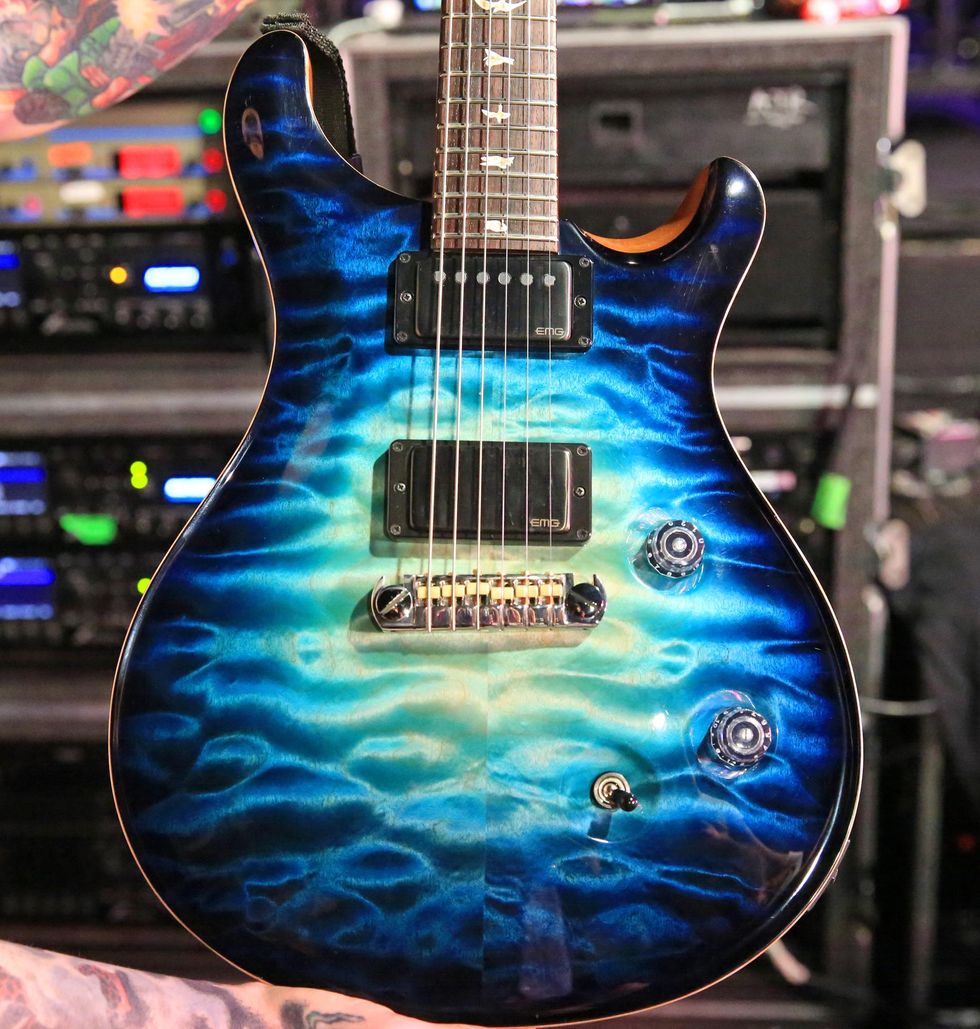
For this special set of shows, longtime rhythm guitarist Mike Martin brought out a pair of eye-popping PRS Custom 24s. First up is this remarkably, ruffled, quilted-maple top (on a mahogany body) that features a stunning “sub-zero-glow, smoked burst” created by Martin’s friend Brian Giampietro, who owns Brian’s Guitars in Cheshire, Connecticut. He dropped in an EMG 81 (bridge) and 66 (neck). The alnico V neck pickup is coil-tapped so Martin can clean up for the softer parts of All That Remains. Most of the band’s material is in either B standard or C# tunings. Martin uses Ernie Ball 2216 Skinny Top Beefy Bottom Slinkys (.010–.054) on both of his guitars and plays with custom Dunlop Tortex picks.
Goosenecking
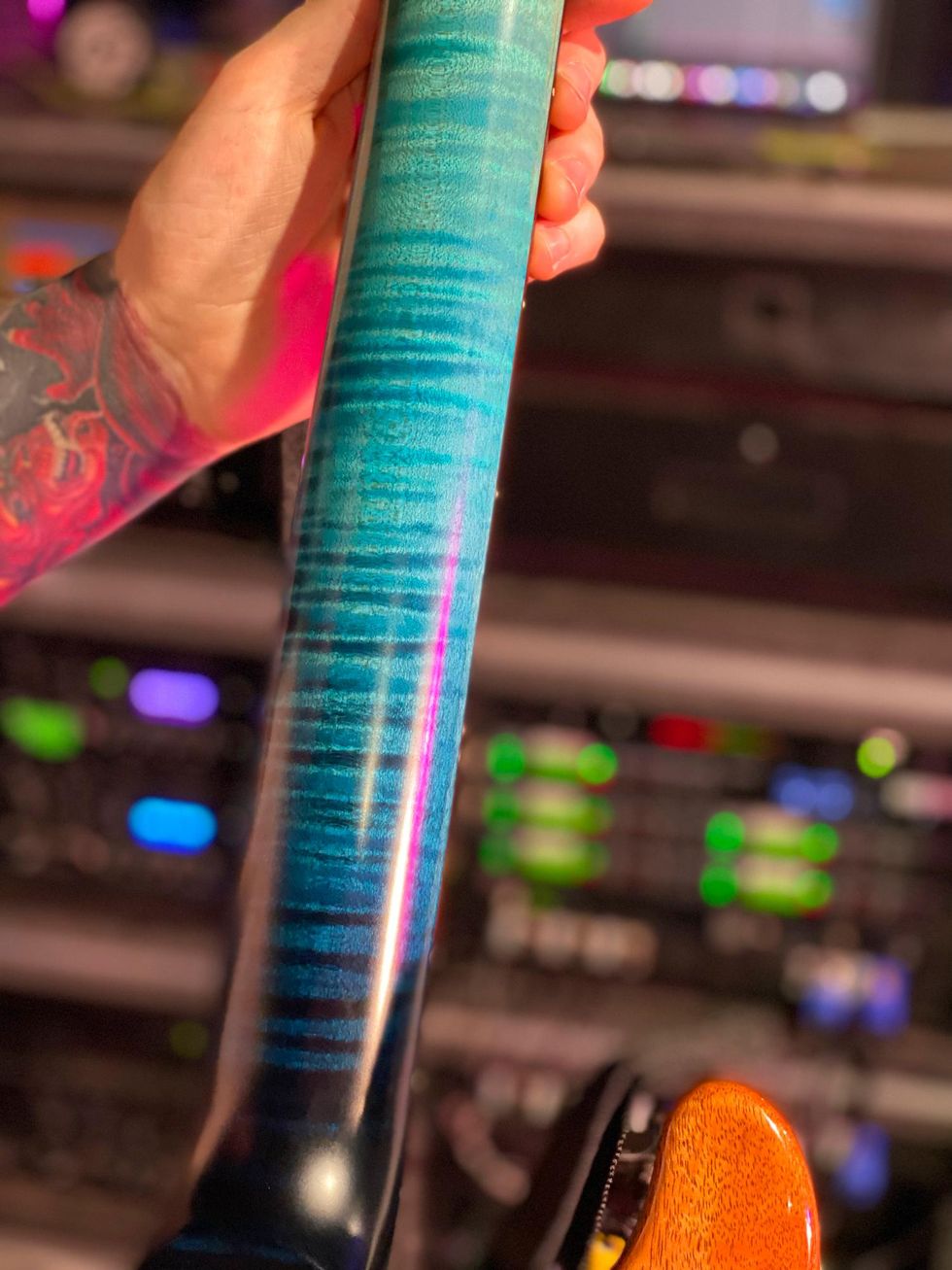
If the top wasn’t striking enough, the back of the flame-maple neck is sure to stop you in your tracks.
Always on My Mind
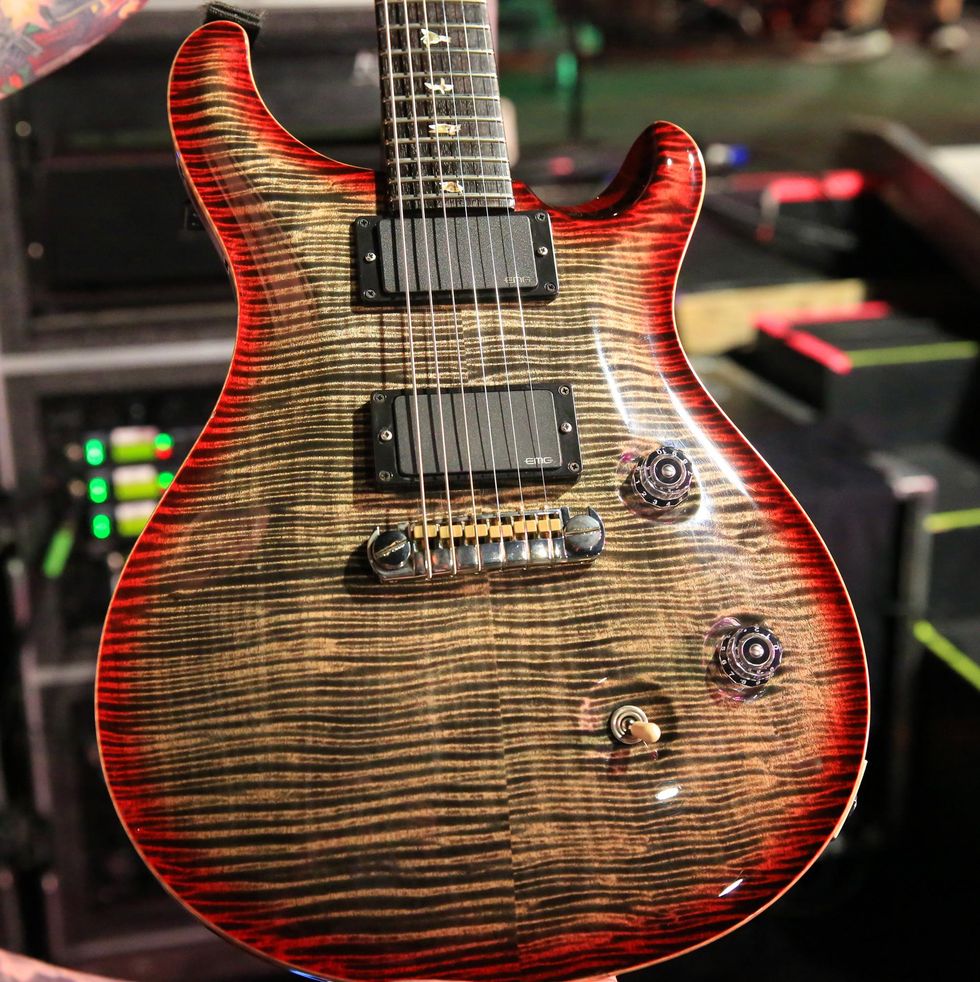
The last seven years, this PRS Custom 24 with a charcoal-cherry burst finish has been Martin’s main ride. The custom order included the request for a stoptail bridge where the stock production models come with a PRS-patented Gen III Tremolo bridge. This one was delivered with PRS 59/09 humbuckers, but to match the high-gain needs of ATR, Martin replaced those with EMGs (81 and 85).
The Legend of Jason Richardson
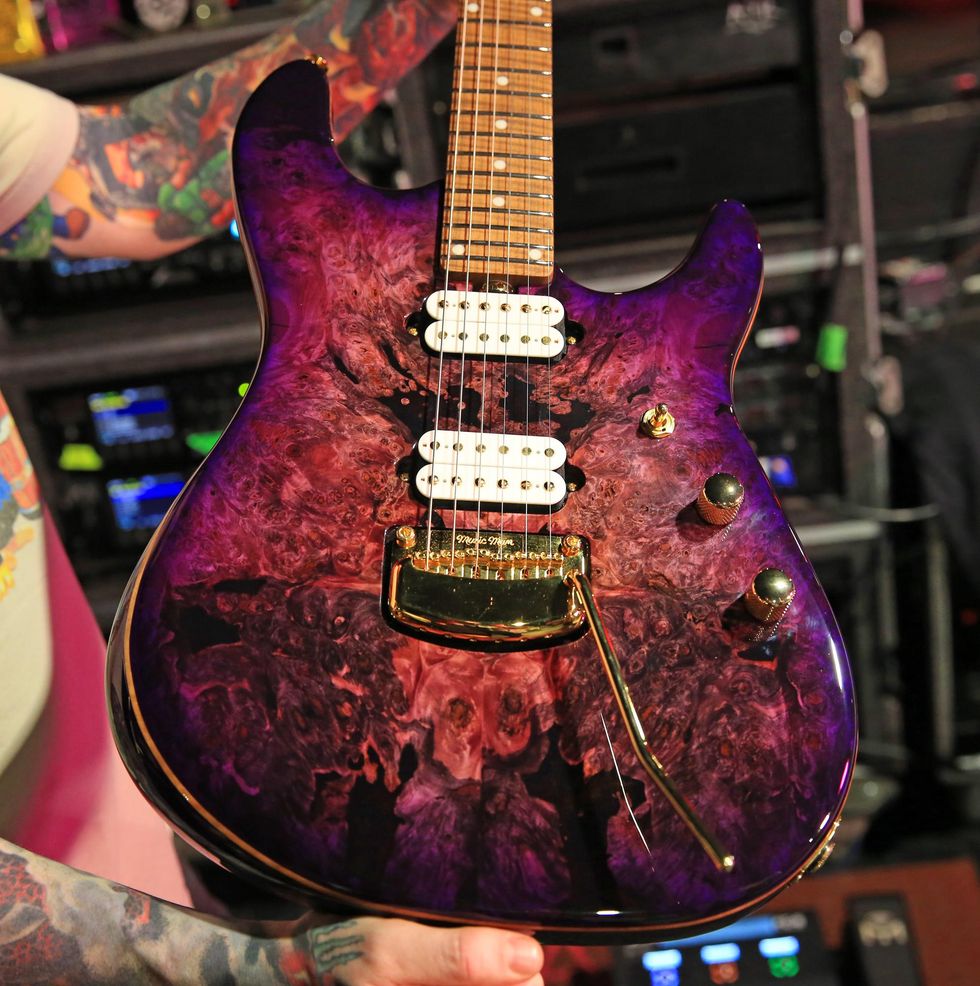
We were given a special treat when talking with All That Remains’ lead guitarist Jason Richardson, who was about to announce two new signature offerings from his Ernie Ball collection. The above Ernie Ball Music Man Jason Richardson Artist Series Cutlass makes a splash with its alder body, capped with a buckeye burl top that’s finished in a Majora Purple. (Richardson admits to being a video game nerd and got the color and name from the The Legend of Zelda: Majora’s Mask, which came out in 2000 for N64.) Additional accoutrements include a roasted maple neck with a sculpted joint, roasted maple fretboard, 24 stainless-steel, medium-jumbo frets, custom Music Man floating tremolo, and a set of custom-voiced Music Man ceramic humbuckers (only available in his signature models). One thing Richardson asked Music Man to do for his namesake speed machine was to coil-tap the humbuckers when the pickup selector is in the middle position, because much of ATR and his solo work requires fleet and fiery playing without a second to spare. All of Richardson’s 6-strings take Ernie Ball Paradigm Power Slinkys (.011–.048).
To the Point
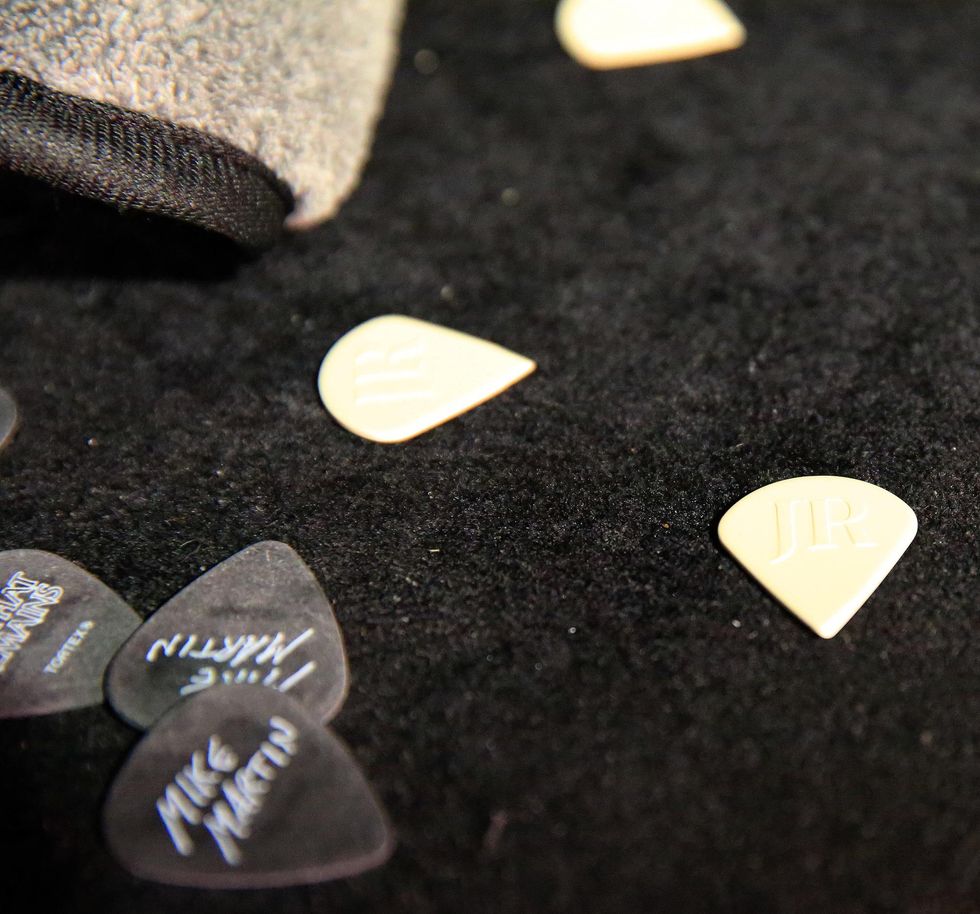
And he’s been hitting the strings with his new custom Dunlop Jason Richardson picks (1.364 mm) that combine the size of Dunlop’s Jazz IIIs with the profile and pointiness of their Tortex Sharps.
White Walker
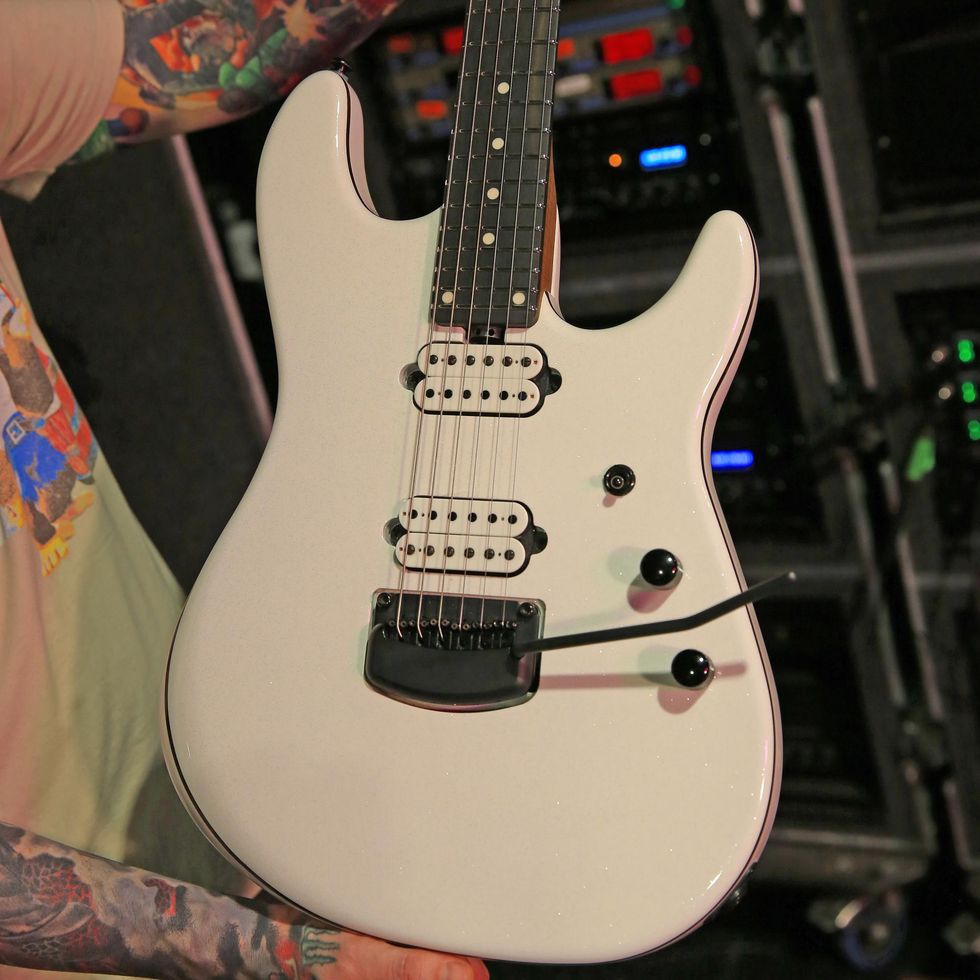
Here’s another one of Richardson’s new signature Cutlass dragsters that’s finished in empress white and set off with a subtly spectacular sparkle job. This one has an alder body and maple top (somewhat pointless to have the burl when it’s under a snow globe), separated by a sliver of walnut that’s sandwiched between the two core woods. Other than the ebony fretboard, this is the same as the previous stunner.
Tell Me What You See
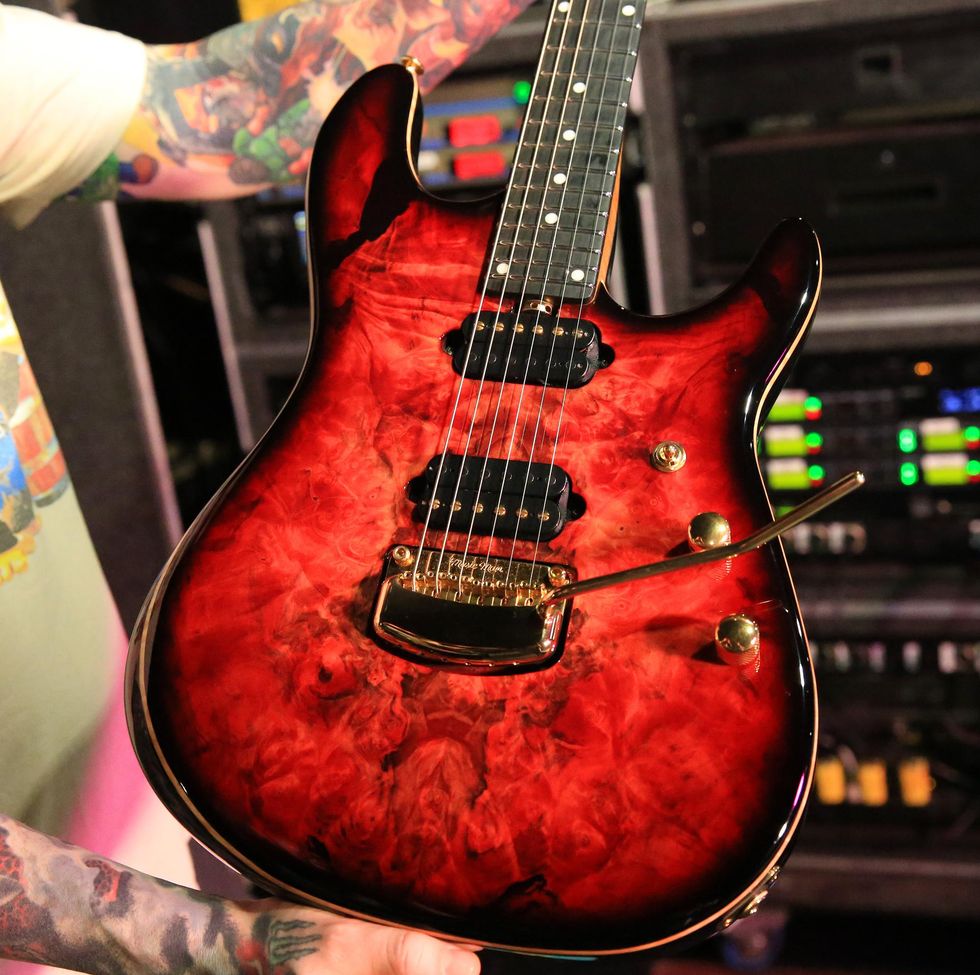
Here’s an Ernie Ball Music Man Jason Richardson Artist Series Cutlass finished in Rorschach red that debuted at the 2020 NAMM Show. The sandwiched wood between the alder body and buckeye burl top in this one is maple.
Buckeye Burst
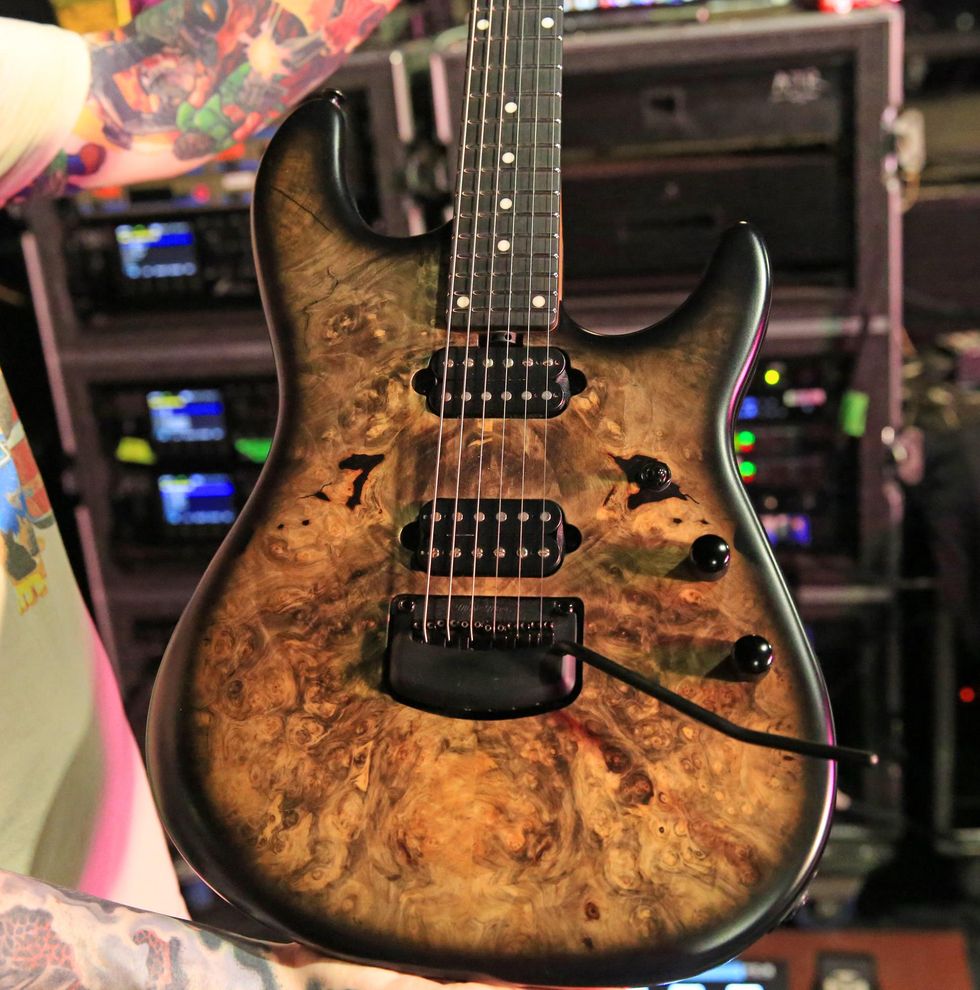
And the last signature axe that Richardson is carrying with him on this run is the Cutlass highlighting the exquisite nature of the buckeye burl top, with a complementary black burst that slightly rims the silhouette of the double cutaway.
Tower of Power
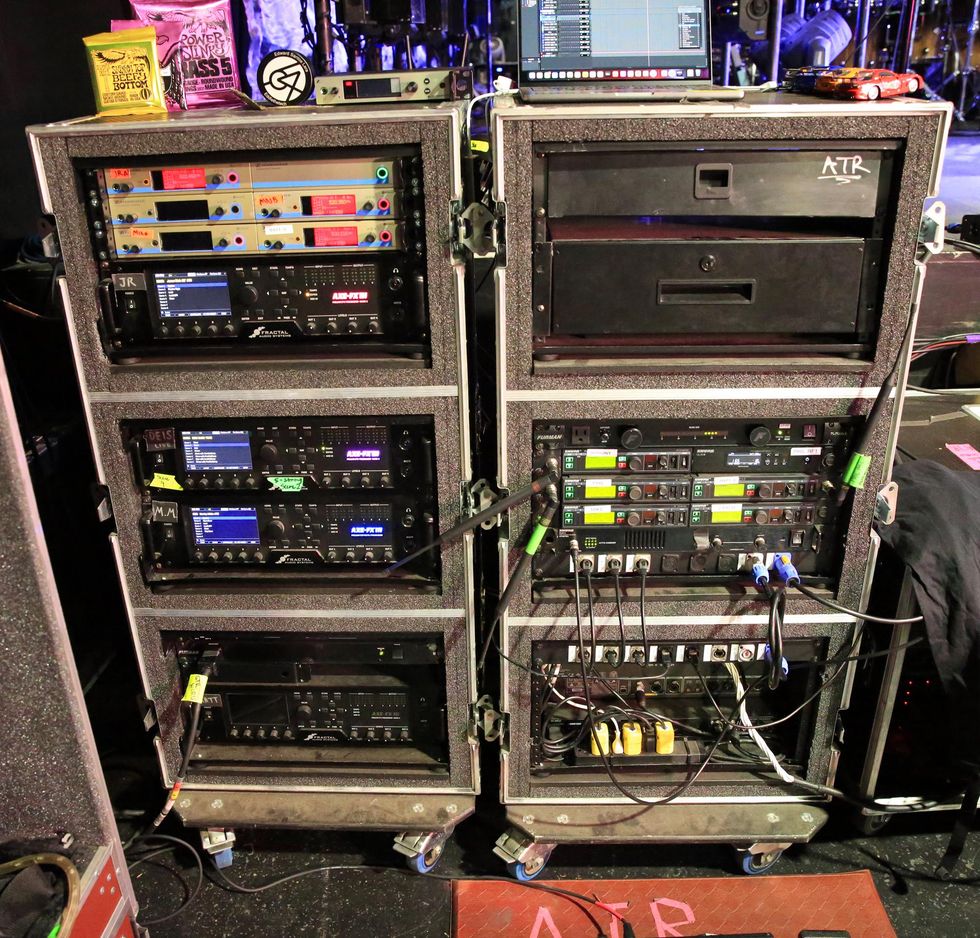
Both Martin and Richardson are running through the Fractal Audio Axe-Fx III. Core patches for Martin revolve around the EVH 5150III, whereas Richardson lives in the Friedman Small Box and HBE realm. The changes are connected to a click track and are automated via Pro Tools.


![Rig Rundown: All That Remains [2022]](https://www.premierguitar.com/media-library/rig-rundown-all-that-remains-mike-martin-jason-richardson-2022.jpg?id=29850873&width=1200&height=675)


![Rig Rundown: Russian Circles’ Mike Sullivan [2025]](https://www.premierguitar.com/media-library/youtube.jpg?id=62303631&width=1245&height=700&quality=70&coordinates=0%2C0%2C0%2C0)

















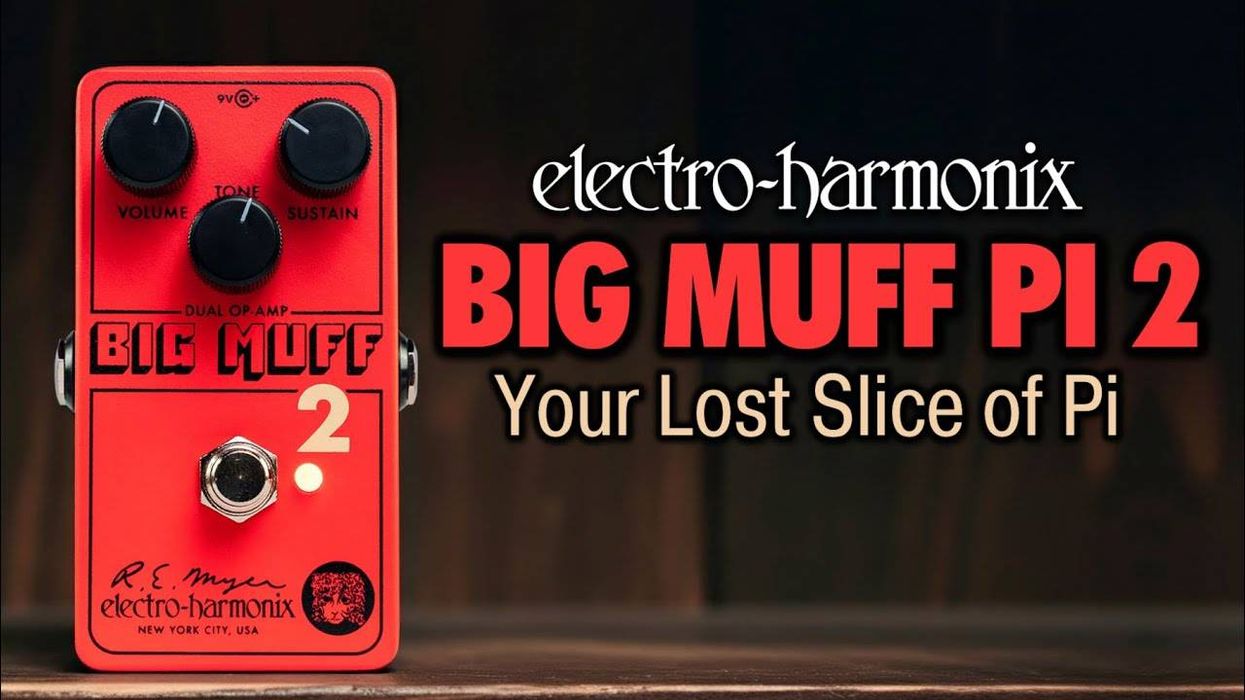

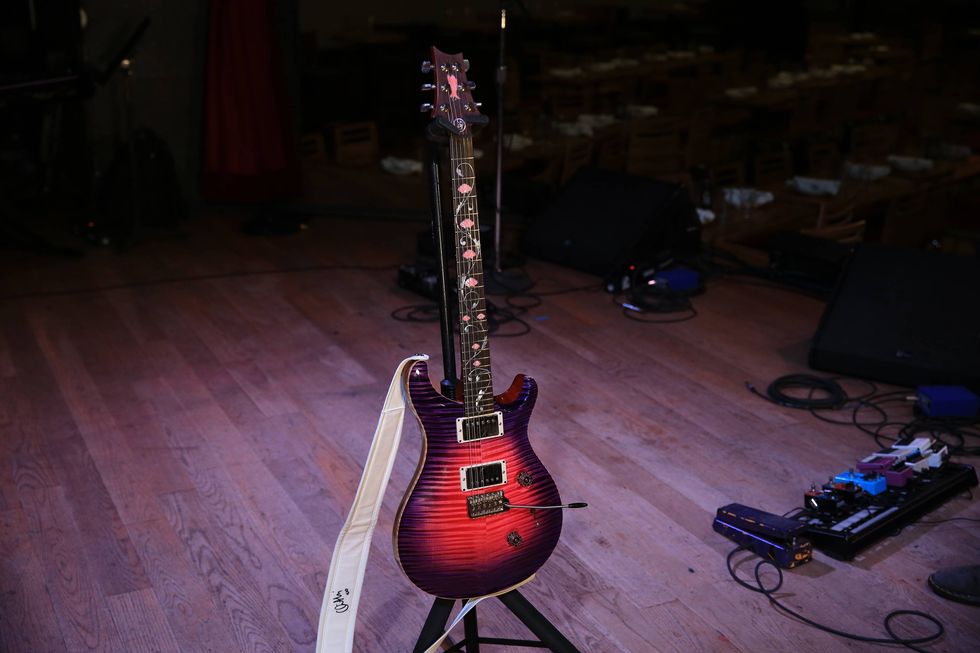
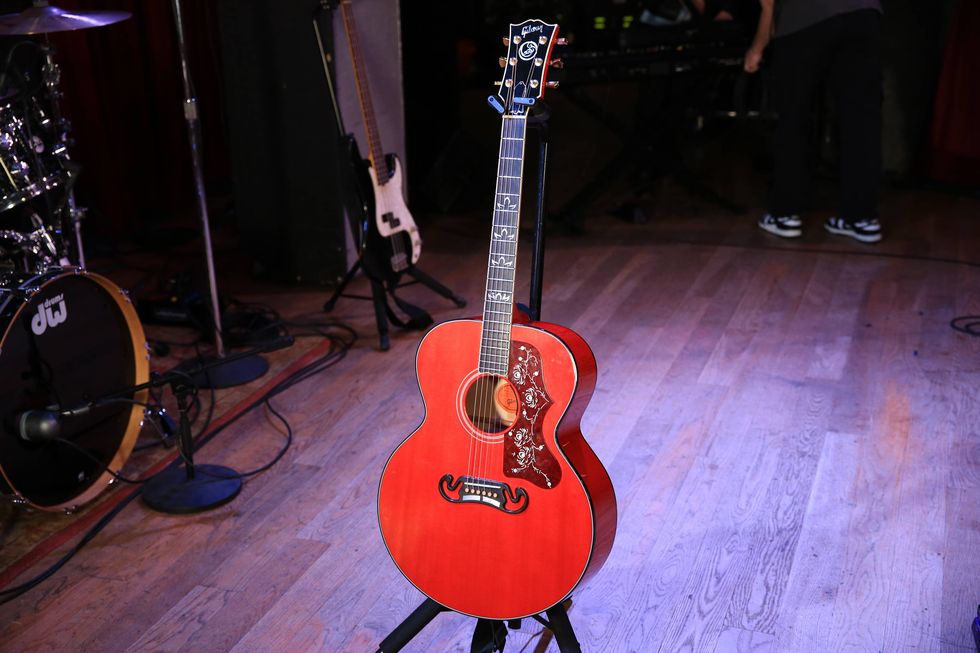
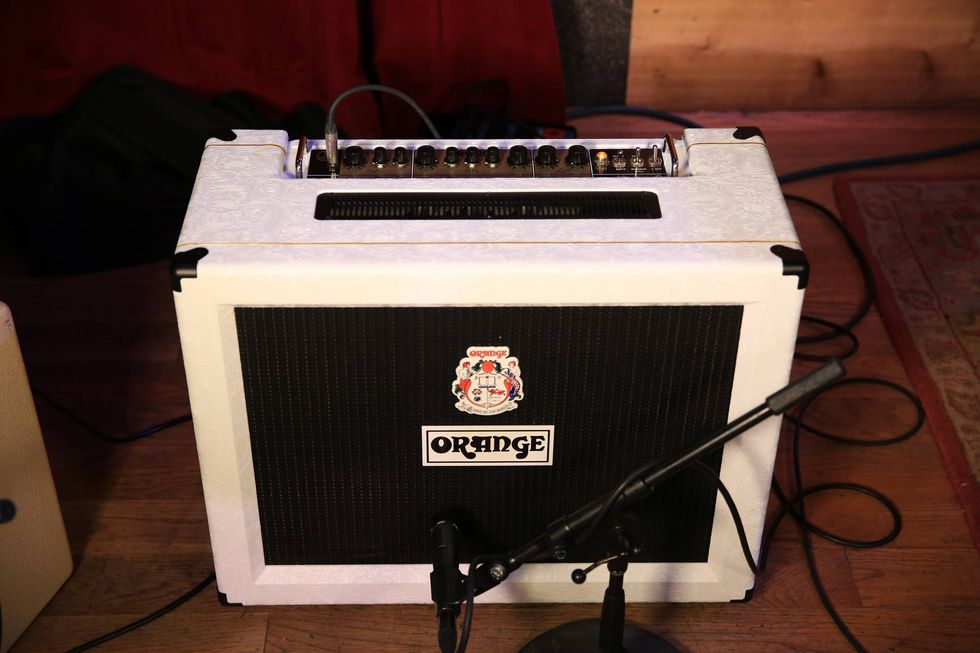
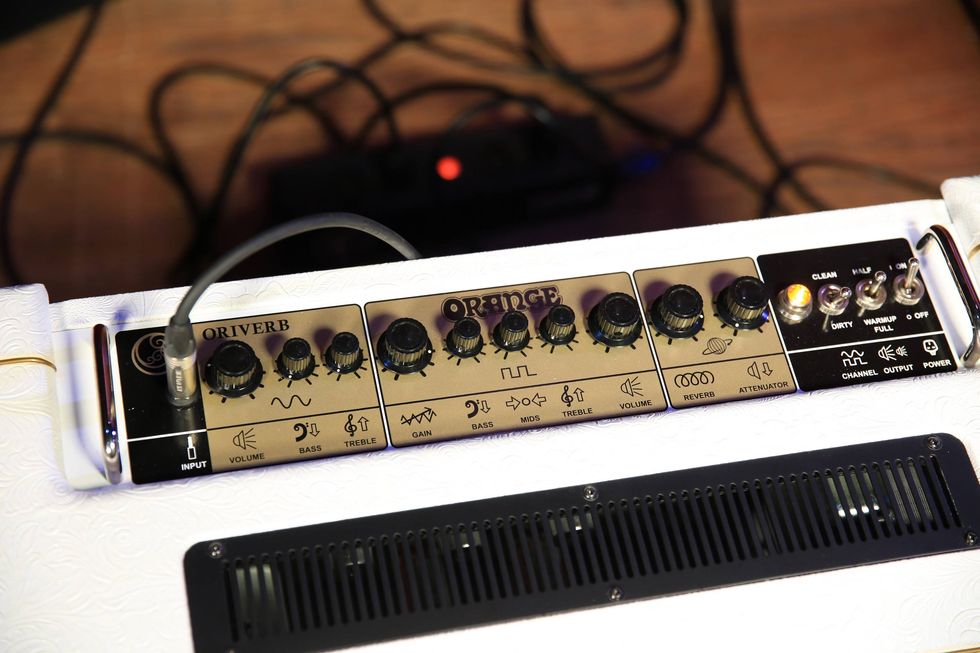
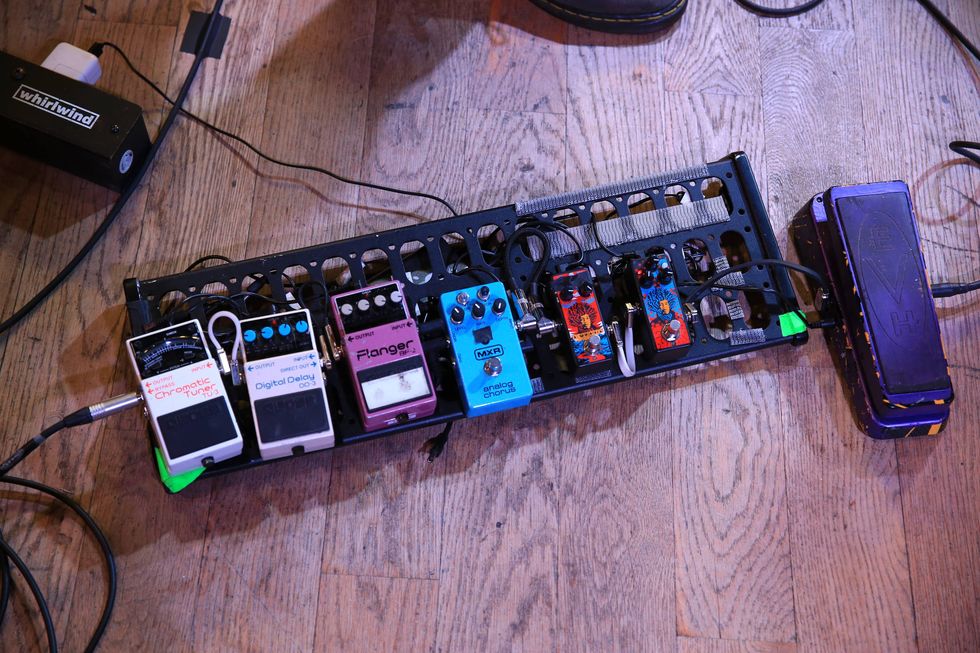

![Rig Rundown: AFI [2025]](https://www.premierguitar.com/media-library/youtube.jpg?id=62064741&width=1245&height=700&quality=70&coordinates=0%2C0%2C0%2C0)




















 Zach loves his Sovtek Mig 60 head, which he plays through a cab he built himself at a pipe-organ shop in Denver. Every glue joint is lined with thin leather for maximum air tightness, and it’s stocked with Celestion G12M Greenback speakers.
Zach loves his Sovtek Mig 60 head, which he plays through a cab he built himself at a pipe-organ shop in Denver. Every glue joint is lined with thin leather for maximum air tightness, and it’s stocked with Celestion G12M Greenback speakers.
















